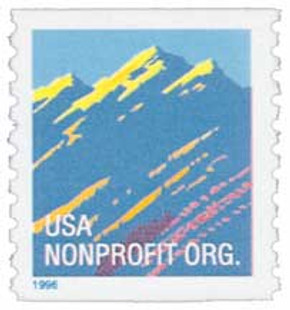
U.S. #3207A
1998 5¢ Wetlands
Self-Adhesive Coil
Issue Date: December 14, 1998
City: Washington, D.C.
Quantity: 800,000,000
Printed By: Bureau of Engraving and Printing
Printing Method: Photogravure
Perforations: 9.8 vertically (die cut)
Color: Multicolored
This 5¢ non-profit rate, non-denominated self-adhesive coil stamp was issued to bring attention to the depletion of America’s wetlands and the important part they play in nature. An important habitat for several species of wildlife, wetlands also help control flooding by absorbing large amounts of water.
Convention On Wetlands
On February 2, 1971, the Ramsar Convention on Wetlands of International Importance Especially as Waterfowl Habitat, also known as the Convention on Wetlands, was signed in Ramsar, Iran.
The idea for the convention was first raised in the 1960s. At the time, there were growing concerns that the continued destruction of wetlands would have an irreversible effect on people and animals, particularly waterbirds. Wetlands play an important role in nature and are an important habitat for several species of wildlife. The wetlands are also an efficient natural system that filters pollutants from the water, absorbs excess nutrients, and reduces flooding.
To address these concerns, Eskandar Firouz, Luc Hoffmann and Geoffrey Matthews developed the idea of the Ramsar Convention – to encourage international cooperation in the protection and management of wetlands around the world. Representatives from seven nations met in Ramsar, Iran on February 2, 1971 to discuss and approve the convention, which went into effect on December 21, 1975. The seven initial participating countries were Australia, Finland, Greece, Iran, Norway, South Africa, and Sweden. In the years to come, the convention grew to over 170 countries, including the United States. They all meet every three years as the Conference of the Contracting Parties to oversee the current wetlands projects and suggest any possible improvements.
The primary goal of the convention is to “stem the progressive encroachment on and loss of wetlands now and in the future.” Further, all the signing parties agreed that “the conservation of wetlands and their flora and fauna can be ensured by combining far-sighted national policies with coordinated international action.”
All signatories of the convention pledge to commit to the proper use of wetlands and to designate and manage Wetlands of International Importance (also known as Ramsar sites). They agree to fully cooperate with other nations concerning shared wetlands and migratory waterbirds.
To date, there are over 2,400 Ramsar sites around the world, spanning over 810,000 square miles. The United Kingdom has the most sites, at 175, followed by Mexico, with 142. The US currently has 41 sites covering 7,276 square miles. To commemorate the convention and promote awareness of the plight of the wetlands, World Wetlands Day was established on February 2, 1997. Every year on this day, communities come together to celebrate, protect, and educate each other about the importance of wetlands for both humans and nature.
Click here to read the full original convention text and here to visit the Ramsar website.















